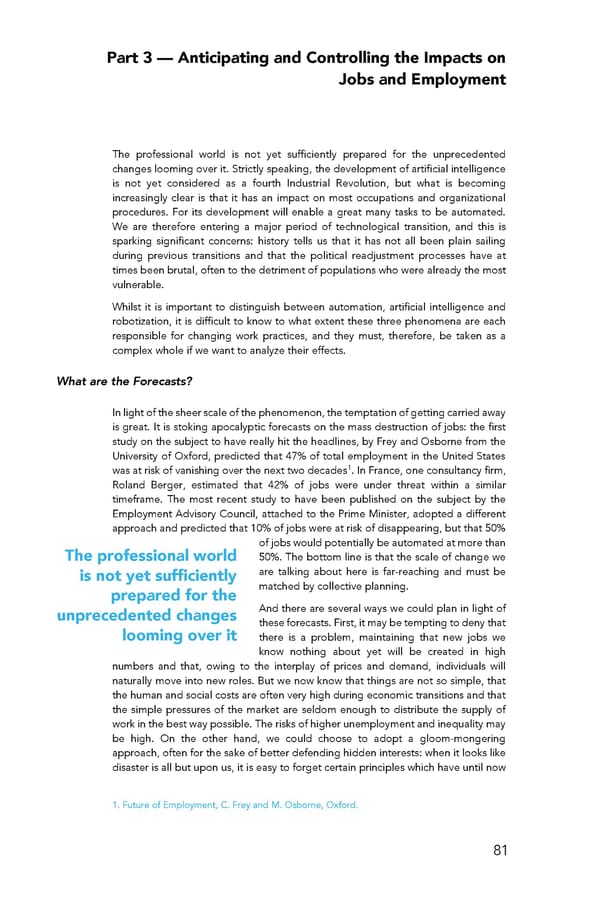Part 3 — Anticipating and Controlling the Impacts on Jobs and Employment The professional world is not yet sufficiently prepared for the unprecedented changes looming over it. Strictly speaking, the development of artificial intelligence is not yet considered as a fourth Industrial Revolution, but what is becoming increasingly clear is that it has an impact on most occupations and organizational procedures. For its development will enable a great many tasks to be automated. We are therefore entering a major period of technological transition, and this is sparking significant concerns: history tells us that it has not all been plain sailing during previous transitions and that the political readjustment processes have at times been brutal, often to the detriment of populations who were already the most vulnerable. Whilst it is important to distinguish between automation, artificial intelligence and robotization, it is difficult to know to what extent these three phenomena are each responsible for changing work practices, and they must, therefore, be taken as a complex whole if we want to analyze their effects. What are the Forecasts? In light of the sheer scale of the phenomenon, the temptation of getting carried away is great. It is stoking apocalyptic forecasts on the mass destruction of jobs: the first study on the subject to have really hit the headlines, by Frey and Osborne from the University of Oxford, predicted that 47% of total employment in the United States 1 was at risk of vanishing over the next two decades . In France, one consultancy firm, Roland Berger, estimated that 42% of jobs were under threat within a similar timeframe. The most recent study to have been published on the subject by the Employment Advisory Council, attached to the Prime Minister, adopted a different approach and predicted that 10% of jobs were at risk of disappearing, but that 50% of jobs would potentially be automated at more than The professional world 50%. The bottom line is that the scale of change we is not yet sufficiently are talking about here is far-reaching and must be prepared for the matched by collective planning. unprecedented changes And there are several ways we could plan in light of looming over it these forecasts. First, it may be tempting to deny that there is a problem, maintaining that new jobs we know nothing about yet will be created in high numbers and that, owing to the interplay of prices and demand, individuals will naturally move into new roles. But we now know that things are not so simple, that the human and social costs are often very high during economic transitions and that the simple pressures of the market are seldom enough to distribute the supply of work in the best way possible. The risks of higher unemployment and inequality may be high. On the other hand, we could choose to adopt a gloom-mongering approach, often for the sake of better defending hidden interests: when it looks like disaster is all but upon us, it is easy to forget certain principles which have until now 1. Future of Employment, C. Frey and M. Osborne, Oxford. 81
 For a Meaningful AI - Report Page 81 Page 83
For a Meaningful AI - Report Page 81 Page 83